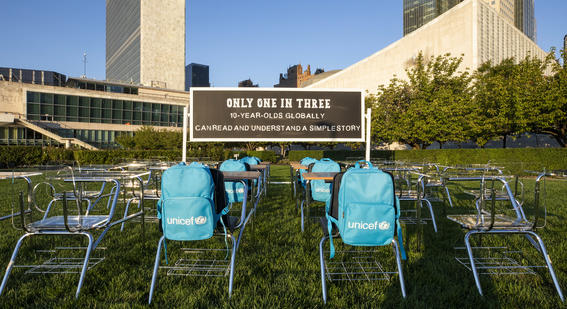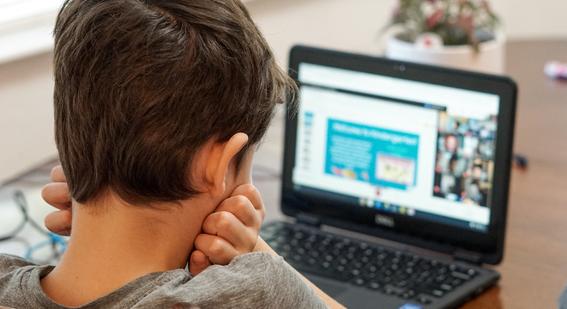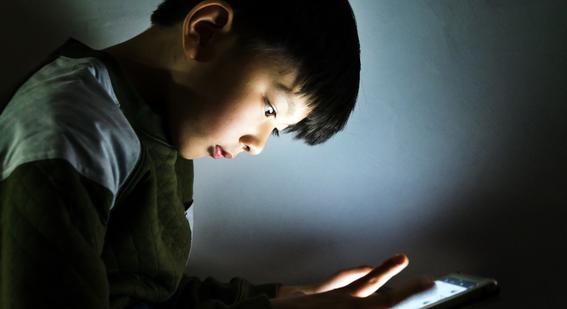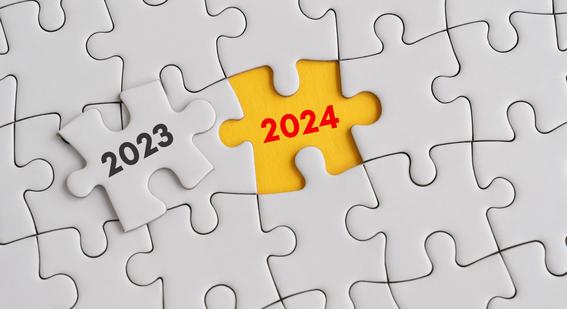Covid’s impact on education: opportunities for the future
Dominique Slade, Head of Education Content & Solutions at Cambridge Partnership for Education, concludes a series of articles for International Day of Education 2023 by outlining future opportunities in education following Covid.
Read Dominique’s other posts, on learnings since the start of the pandemic and the new challenges for education.
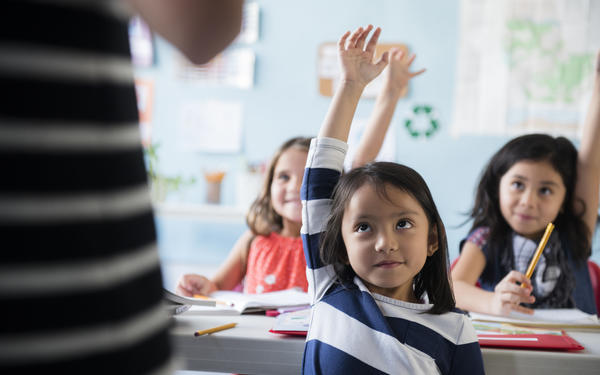
Opportunity 1: Prioritising quality early years education to reduce learning inequalities
Early years education is one of the UN Sustainable Development Goals (4.2): ‘By 2030, ensure that all girls and boys have access to quality early childhood development, care and pre-primary education so that they are ready for primary education.’
This goal is underpinned by what academic research has demonstrated over the past 40 years about the impact of early years education on life expectations.
Nobel Prize winner Professor James Joseph Heckman has been particularly influential in making the financial case for investing in early years education:
The highest rate of return in early childhood development comes from investing as early as possible, from birth to the age of five, in disadvantaged families; starting at age three or four is too late, as it fails to recognize that skills beget skills in a complementary and dynamic way. Efforts should focus on the first years for the greatest efficiency and effectiveness. The best investment is in quality early childhood development from birth to five for disadvantaged children and their families.
- Professor James Joseph Heckman
Despite this growing evidence, investment in early years education has remained patchy in most low- and middle-income countries struggling with competing priorities.
However, in the face of the lessons learned and challenges facing education systems as a result of the COVID-19 pandemic, it makes sense to be reminded that prioritising investment in early years education is essential to address learning inequalities.
Public investment in early years education not only provides a way of ensuring a level playing field at the start of primary education – as ‘children who start behind, stay behind – they are rarely able to make up the lost ground’ – but it also allows, as Professor Heckman has shown through his ground-breaking research, the greatest returns in countries’ education, health and future economic prosperity.

Opportunity 2: Redefining the content of education to equip young people for the world they will inhabit
Rethinking the curriculum in the age of machine learning and artificial intelligence
Rethinking curriculum content in the age of new technologies requires an in-depth reflection on the nature of today’s world and the role of education in preparing people for the world of tomorrow.
In a world where the use of machine learning and artificial intelligence (AI) is increasing rapidly in all areas of human activity, including education, it is essential to understand what the content of education should be to prepare humans to live in an AI world.
In her book ‘Machine Learning and Human Intelligence: The Future of Education for the 21st Century’, Professor Rose Luckin makes the case for education to focus on the development of the qualities that make us human as they are the ones likely to remain difficult to achieve with machines: empathy, social interaction, problem-solving, critical thinking, imagination and creativity, among others.
She proposes a model of education that goes beyond the traditional ideas of knowledge-based or competence-based education to what she calls ‘intelligence-based education’:
Knowledge is the lynchpin of many education systems and it remains a key element of our intelligence, but it is merely one element, it is not the whole story. It is the element that is the easiest to automate and therefore we need to revise our relationship to knowledge... The intelligence-based approach depends far less on absorbing large amounts of academic information into memory, and far more on understanding how to construct understanding and commit knowledge to memory, when it is appropriate to do this, why it is appropriate to do this and for what purpose.
- Professor Rose Luckin
At a time when the world is facing so many different challenges, it is tempting to turn to education as a solution, often adding new and unrealistic aims to national curricula, without enough consideration for how this added content fits within already overloaded curricula, who will deliver the new content and how it will be delivered. Instead, it is important to carefully rethink the knowledge, skills and attributes young people will need to be able to live fulfilling lives in the age of new technologies.
The focus must be on ensuring the acquisition of basic skills as an essential foundation on which to access and develop ‘intelligent learning’; avoiding curriculum overload to provide time to focus on the development of in-depth understanding of content, rather than superficial curriculum coverage; and ensuring a broad and balanced curriculum that doesn’t squeeze the arts, humanities and physical education in favour of STEM subjects (Science,
Technology, Engineering, Mathematics) to ensure the holistic development of young
people as well-rounded human beings.

Reconsidering foundational skills in the age of the internet and social media
Focusing on the mastery of basic literacy and numeracy skills for all should be one of the key priorities of basic education, not only because it makes educational, socio-economic and ethical sense but also because it is essential to empower young people to become effective, independent learners in the age of new technologies.
However, it is also important to reconsider foundational skills in the age of the internet and social media, in particular what ‘reading’ means in the digital age and how best to develop these essential skills in the future.
The OECD report ‘21st Century Readers: Developing Literacy Skills in a Digital World’, published in 2021 and based on the results of the 2018 PISA assessment, provides a useful insight into how we need to reframe our understanding of literacy skills in the age of new technologies:
Literacy in the 20th century was about extracting and processing pre-coded and – for school students – usually carefully curated information; in the 21st century, it is about constructing and validating knowledge. In the past, teachers could tell students to look up information in an encyclopaedia and to rely on that information as accurate and true. Nowadays, Google presents them with millions of answers and nobody tells them what is right or wrong, and true or not true. The more knowledge technology allows us to search and access, the more important it is to develop deep understanding and the capacity to navigate ambiguity, triangulate viewpoints and make sense out of content.
- OECD, 2021
As well as reading skills, it will also be essential to reconsider the other two foundational skills: numeracy skills, to address what in England is referred to as the ‘forgotten third’ or the third of 16-year-olds not achieving the expected standards in mathematics, and basic data literacy for all from a young age – not the technical detail of coding, but the principles and logic upon which such systems are designed – as an essential preparation for the AI world young people will move into and a way to understand how personal data are collected and used, so they can make informed choices for themselves and their societies.

Embedding sustainability and climate education within the curriculum
A 2021 research paper published by the medical journal The Lancet shared the results of a global survey looking at ‘climate anxiety in children and young people and their beliefs about government responses’. The survey’s conclusion was that:
Respondents across all countries were worried about climate change (59% were very or extremely worried and 84% were at least moderately worried). More than 50% reported each of the following emotions: sad, anxious, angry, powerless, helpless and guilty. More than 45% of respondents said their feelings about climate change negatively affected their daily life and functioning, and many reported a high number of negative thoughts about climate change (e.g. 75% said they think the future is frightening and 83% said they think people have failed to take care of the planet).
Relentless images of the consequences of climate change inhabit our 24/7 news cycle, increasing a global feeling of anxiety about the future. However, this visibility has also finally contributed to the – almost – universal recognition that climate change is one of the key priorities the world needs to address today.
Embedding sustainability and climate education within the school curriculum is not just about equipping young people with the knowledge and skills to allow them to reduce their impact on the planet within their lifetimes. It is also about understanding the link between climate change and inequalities; understanding the link between the personal, the local and the global and how individual actions can have a global impact; and giving young people the confidence that they can find solutions and equip them to do so.
Ultimately, it is about making young people feel engaged with the real world and empowered with the feeling that they can make a difference. It is about generating hope, rather than anxiety, about the future – making young people realise, as so wonderfully expressed and forcefully demonstrated by Greta Thunberg, that ‘No one is too small to make a difference.’

Opportunity 3: Reviewing the delivery of education to improve learning outcomes for all
Reforming teacher education to empower the teachers of the future
Academic research universally agrees that teacher quality is one of the largest impact factors on the quality of education and leads to improved outcomes; this is recognised in UN Sustainable Development Goal 4 (Quality Education), where the role of teachers is identified as one of the key enablers to improve the quality of education for all:
As teachers are a fundamental condition for guaranteeing quality education, teachers and educators should be empowered, adequately recruited and remunerated, motivated, professionally-qualified and supported within well-resourced, efficient and effectively-governed systems.
Addressing teacher quality was a priority that long preceded the COVID-19 pandemic. However, during school closures, teachers all over the world had to adapt almost overnight – and often with little support and preparation – to new ways of delivering education.
While most schools have now reopened, hybrid forms of schooling and increased use of new technologies are becoming the norm. The rapid expansion of the use of new technologies in schools is one of the most visible changes having a direct impact on teacher practices.
As a result, a lot of effort can superficially prioritise developing teachers’ digital skills to improve learning outcomes for all, rather than focusing on more fundamental issues, such as understanding how learners learn; how different types of teaching and learning resources, new or traditional, can enhance learning; and, above all, how the challenges facing the world today can have a direct impact on young people’s mental and physical wellbeing, disrupting their ability to engage in their own learning.
As the world inside and outside schools changes rapidly, education systems need to reflect these changes in order to fulfil their mission of equipping all young people for their future. As both the content and the way education is delivered continue to evolve, education systems should carefully rethink initial teacher education to ensure that the next generation of teachers are truly equipped and empowered to achieve their mission.
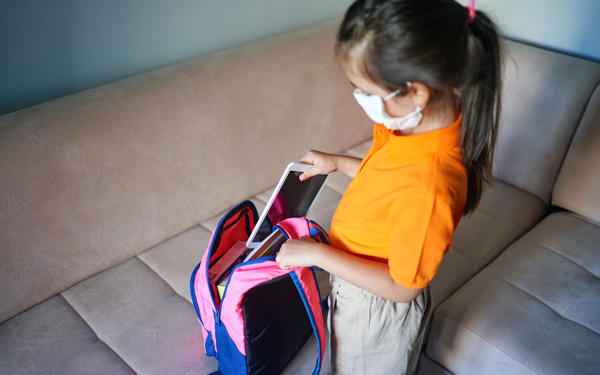
Understanding the respective pedagogical value of multi-modal educational resources
Educational resources in the age of new technologies represent a huge and rapidly expanding market. Amid a growing supply of resources in a competitive environment that encourages overblown, unsubstantiated promises, understanding the respective merits of different types of resources becomes extremely complex.
This complexity is further increased by the fact that ‘digital’ formats have a greater degree of variability than ‘print’. Examples of digital resources can vary from a series of videos hosted on YouTube with no interaction and a linear learning path; to an adaptive learning platform that continually assesses users and shapes their learning journey according to diagnosed gaps and strengths; or an immersive virtual world in the metaverse where students can interact directly with a teacher’s avatar to practise their language skills.
The user experience and learning design for each of these resources are so wildly different that convincing evidence on the comparative value of each multi-modal educational resource is both difficult to establish and limited.
Although there is no denying that digital resources and new technologies can enhance teaching and learning – e.g. adaptive learning technology can enhance learning of languages; augmented reality, animations and simulations can enhance the depth of students’ understanding of science topics; a whole range of innovative collaboration tools can help develop collaborative skills; and readily accessible functionalities can support learners with specific disabilities – digital resources are not a magic answer to improving the quality of learning for all.
Digital resources are not a magic answer to improving the quality of learning for all.
On the one hand, they can enhance learning when used by competent, well-trained teachers. On the other hand, traditional resources remain, in some cases, the best resources for learning, in particular to develop reading skills: ‘the most comprehensive meta-analyses have shown that reading from paper yielded better reading comprehension
compared to digital reading, especially when there is a time constraint,’ (Delgado et al., 2018[29]).
Other studies have shown that, while reading comprehension is similar between print books and e-books, e-book readers were not as efficient as print readers in ordering events and locating them in the timeline in which they occurred (Mangen, Olivier and Velay, 2019[31]) (OECD Report 21st Century Readers, page 27).
It will therefore be essential in the future, as new types of resources continue to appear on the market, to further develop our understanding of the respective value of multi-modal
teaching and learning resources, their respective benefits depending on subjects taught, the learning outcomes they are aiming at – targeted age group, ability, etc. – and to include
this understanding as an essential component of initial teacher training, so that teachers are equipped to select the most appropriate resources for their learners.
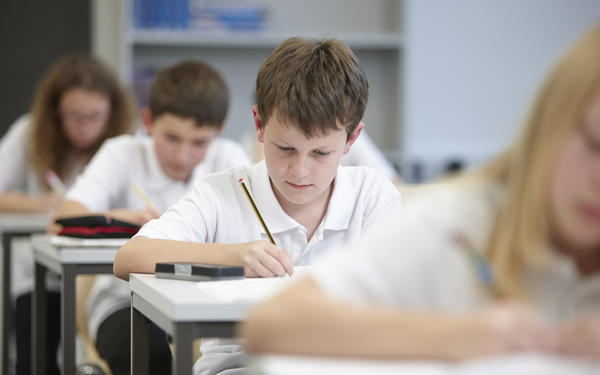
Reimagining assessment in the age of new technologies
Reimagining assessment in the age of new technologies involves reconsidering the many dimensions of assessment in education. Changes such as adjustments to the curriculum and approaches to teaching and learning are obviously needed, for example changes to the assessment of reading skills in the digital age by developing comprehensive assessments of skills such as the ability to identify reliable sources, distinguish between fact and opinion, recognise bias, etc.
Other changes, though, are more complex to address, such as resolving the disconnect between how students learn and how they take high-stakes assessments. Part of the complexity here is that the challenge is as much ethical as it is technical. The lessons learned from the pandemic illustrate this point quite clearly:
Inequalities in access to digital equipment for learning are such that moving high-stakes assessments from paper to digital format would increase inequalities even further.
Students who haven’t had access to personal digital equipment are at a disadvantage if high-stakes assessments move to digital; on the other hand, students who have had access to new technologies from their early years can also be at a disadvantage when having to sit paper-based exams.
Whereas technology has made significant progress in addressing the challenges involved in delivering high-stakes assessments digitally, the remaining ethical issues are difficult to resolve and will require proper debate with all stakeholders to find solutions that are fair to all.
Similarly, if education is strongly redirected towards the holistic development of young people as well-rounded human beings – with increased focus on the development of qualities that will prepare them for the AI world of the future, such as empathy, collaboration, critical thinking, creativity and imagination – this poses the question of whether these qualities should be assessed.
The ‘Happiness Curriculum’ developed by the government of Delhi, which my colleague Tim Oates got a closer look at last week, provides an interesting case study. The curriculum is based on the belief that ‘the purpose of education is to create confident, mindful, responsible and happy individuals who collectively build a happy and harmonious society’. Should this curriculum be assessed? If so, for what purpose? With what weighting compared to other subjects? And, as importantly, how?
Reimagining assessment in the age of new technologies involves engaging with many complex questions, many of which go beyond addressing technical issues.
If you’d like to discuss how we at Cambridge can help you tackle your unique challenges in education delivery then please contact us.
This blog draws from our report: Covid's impact on education after more than two years.

